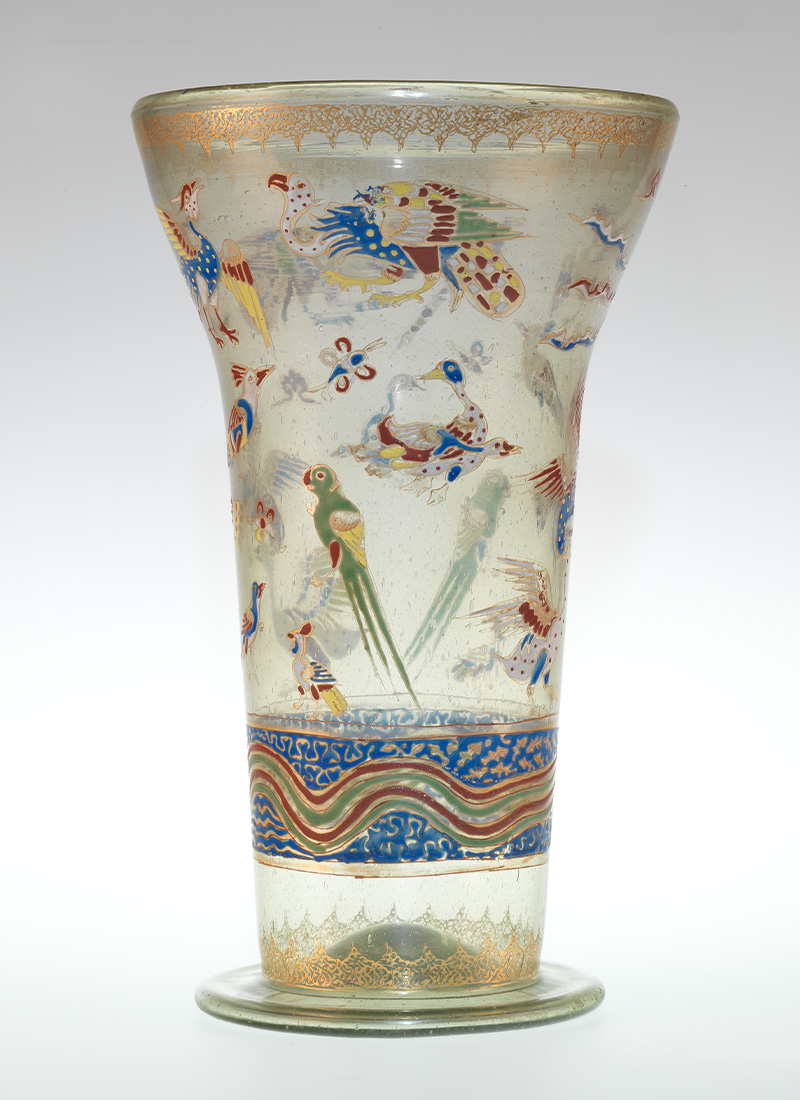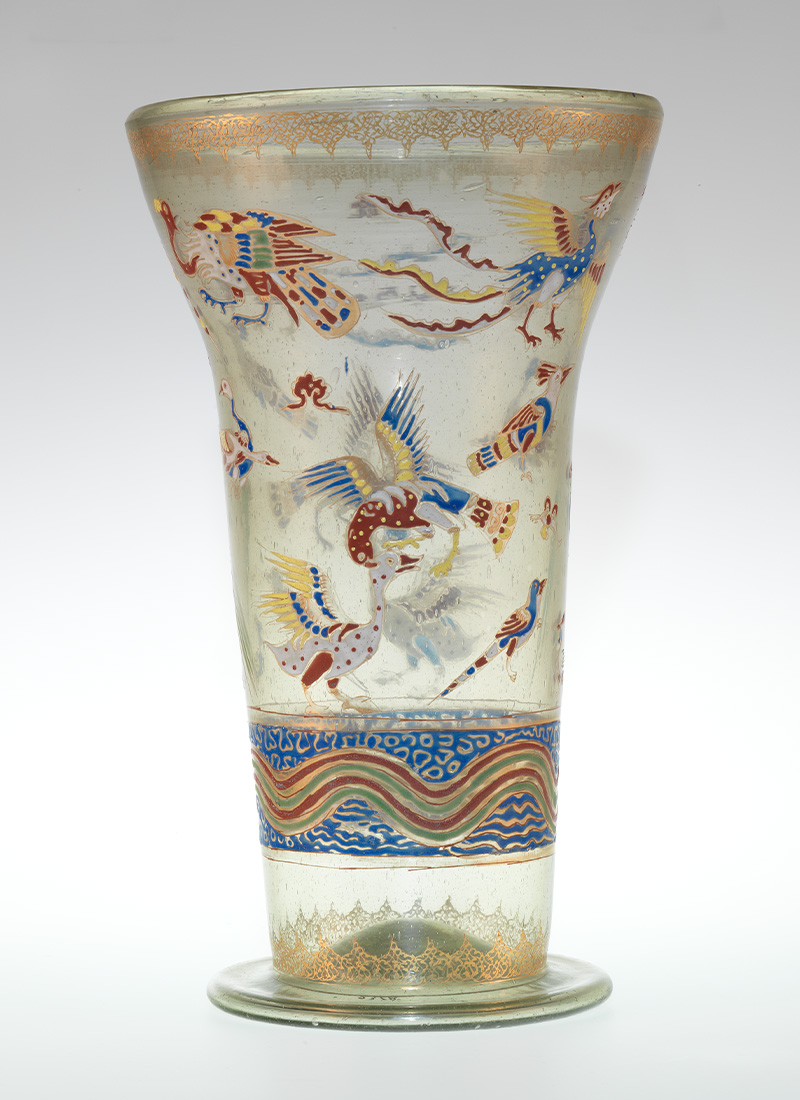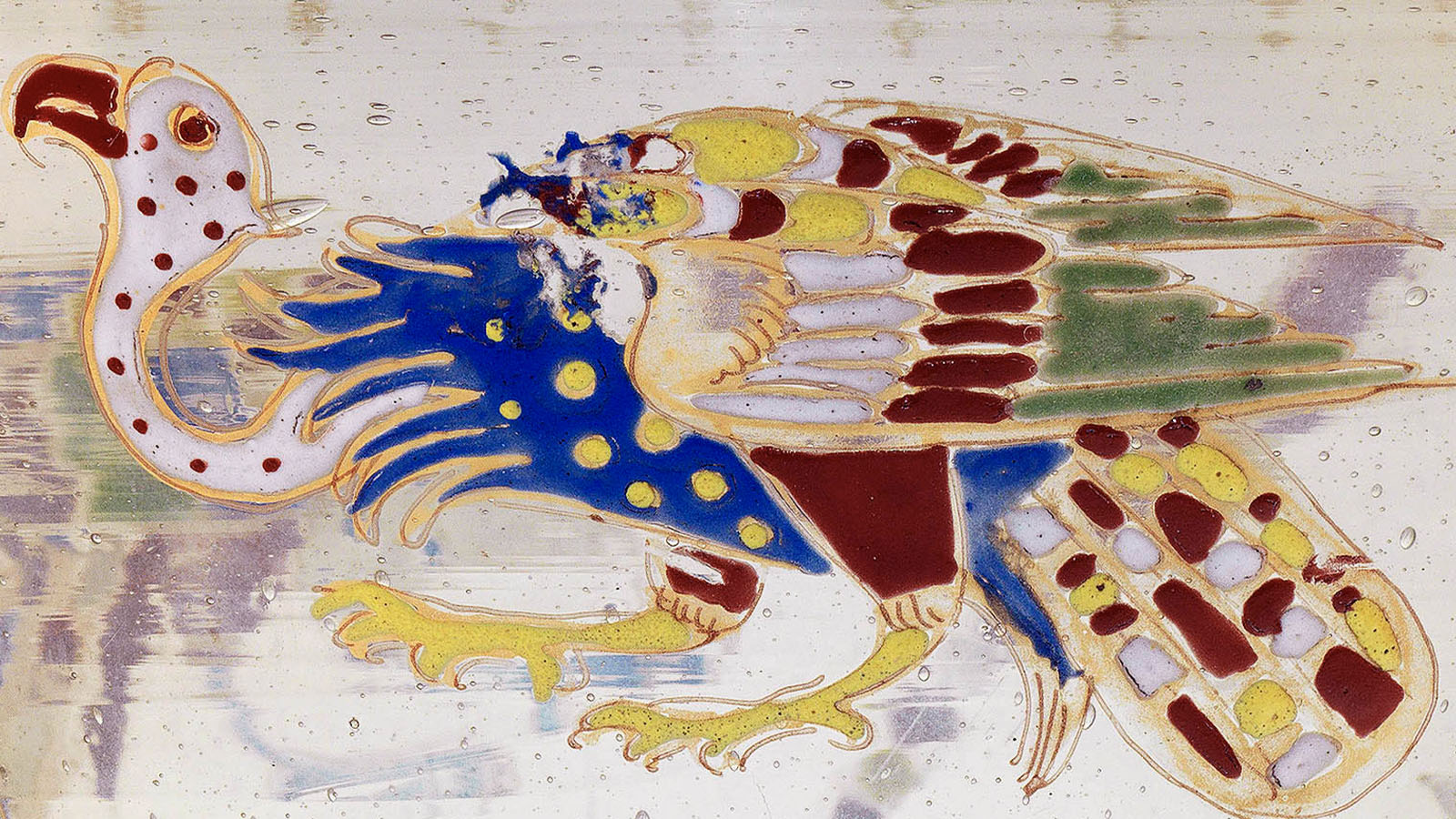Glass vase
The most original piece of Mamluk period glassware in the Gulbenkian Museum is an object with a secular use, despite mosque lamps featuring more significantly in this section of the collection. The originality of this vase is obvious, not just for its shape – with a cylindrical profile widening towards the top, a smooth and simple brim and a convex base – but also for its size, being, with a height of 33.5 centimetres, the largest known vase of this type, comparable only to those of the Bayerisches Nationalmuseum (Munich), the Freer Gallery of Art (Washington) and the Stätisches Museum (Mönchengladbach). Originating in China, where it was acquired by Georges Eumorfopoulos in around 1918, it was later auctioned by Sotheby’s, in London, in 1940, when it was purchased for the collection.
Its intricate and vibrant iconography includes a series of asymmetrical representations of birds, both real and mythical, copied on both sides with small variations, including a goshawk or kite, a duck, a goose, a parrot, a hoopoe, a vulture or magpie, among which we can also see a fantastical phoenix: the bird of fire popularised in the west through Greek mythology, probably originating in eastern legend, being a very popular myth in China; it would have had bright red and golden feathers, replicating the tone and flicker of flames, by which it was consumed when it died, to then be reborn from its own ashes. Next to the disc that forms its circular base, it has a wide border with fish against a blue background, with a red, green and gold wave churning within. Around the brim and base, there is also delicate gilded filigree decoration.
The depiction of birds in flight extends all around the vase, without mouldings or divisions, as if in a continual roll. The composition is dominated by the phoenix and the vulture, which seem to fly above the other birds. All the representations are extremely realistic in relation to the anatomy of the various species portrayed – even maintaining an approximation of their relative proportions – but this realism does not extend to the vibrant colour of their plumages, in tones of red, blue, green, yellow and white, clearly homologous to precious stones; the brightness of these colours (now rather faded, but still perceptible) would help create a lustre that, completed by the colour and transparency of the piece, would make it seem as though the birds are almost floating in the space. This is in spite of the fact that most of the birds are not actually depicted in flight – particularly the hoopoe, the magpie and the parrot – with the exception of the bird of prey and the geese on the verge of collision. The entire composition is dominated by a clear hierarchy, with the phoenix and the vulture, larger, at the top of the composition, and the wild birds in the middle, while the domestic birds appear next to the base.


The inspiration for this elaborate iconography is thought to be found in illustrated scientific manuscripts and bestiaries – more common in the Islamic world than the Christian – a highlight among which is the Kitab Manafi’ al-Hayawan [Book on Animal Utility], of which an original Mamluk copy, from 1354, compiled by Ibn al-Durayhim al-Mawsili, has been preserved in the Royal Library of El Escorial.
